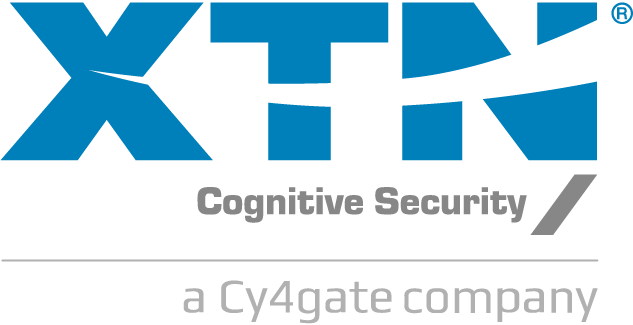
CARD FRAUD DETECTION
Empower your banks with real-time fraud protection and user behavior risk analysis to safeguard against fraudulent transactions.
Keep your digital business safe from Card Fraud with XTN Cognitive Security®:
- Avoid extra operational costs
- Prevent financial loss
- Preserve your Brand Reputation
Market Overview
The Card Fraud market presents a significant challenge in terms of financial losses and security risks. While it is challenging to estimate the exact size of the market due to underreporting and evolving fraud methods, it is clear that card fraud remains a global concern. According to industry reports, card fraud accounts for billions of dollars in losses annually. The exact figures vary by region and industry, but the impact is widespread. Fraudulent activities range from counterfeit card use and stolen card details to online scams and identity theft.
What is it?
Card fraud is an inclusive term for fraud committed using a payment card, such as a credit card or debit card. It refers to the unauthorized use of someone else’s card information for fraudulent purposes, occurring when an individual utilizes another person’s card details without their consent. This may involve making unauthorized transactions online, at physical stores, or withdrawing cash from ATMs
How does it work?
Card Fraud works through unauthorized use of someone’s credit card information. Fraudsters obtain the card details through data breaches, hacking, or physical theft. They then make unauthorized purchases or transactions, often online. They may also clone cards or use skimming devices to capture card information.
Most critical Card Fraud methods include:
Card-not-present fraud: This is the fraudulent use of a credit card account without possession of a physical card. Fraudsters might obtain your information through phishing or hacking, and some criminals sell card data online on the dark web. The thief doesn’t need the physical card since online purchases only require that they know your name, account number and security code. Very often, theft is completed with the fraudster purchasing goods for quick delivery using the victim’s card, reselling or returning them to monetize the fraud.
Cloned cards: Devices called “skimmers” that fit over card readers on gas pumps and retail sales terminals can allow thieves to secretly steal your card number when you swipe, then make a duplicate for their illicit use. EMV chip-equipped cards have made this process much more difficult.
Card present fraud: This type of fraud occurs when a fraudster physically presents a counterfeit or stolen credit card to make purchases at physical stores or withdraw cash from ATMs. They may use various techniques to deceive merchants and avoid suspicion.
NFC/RFID Skimming: A criminal practice where attackers attempt to obtain personal or financial information from NFC (Near Field Communication) or RFID (Radio-Frequency Identification) enabled cards without the owner’s consent. They use skimming devices to intercept data at short distances and use the stolen information for unauthorized transactions or identity theft.
The challenge
Main risks associated with Card Fraud are the financial and operational costs required to manage the reports opened by the defrauded customers. Specifically, when the card is issued by a card provider (such as VISA, MC, etc.), they are responsible for resolving the issues. On the other hand, in the case of problems with cards issued by banks, such as debit and prepaid cards, the bank bears the responsibility. The challenge in detecting Card Fraud lies in the constantly evolving nature of fraudulent activities and the tactics employed by fraudsters. With a large volume of transactions to monitor, distinguishing between legitimate and fraudulent activities becomes complex. Fraudsters use sophisticated techniques and exploit vulnerabilities, making it difficult to identify fraudulent transactions accurately. Detecting fraud requires advanced systems and algorithms that can analyze patterns, detect anomalies, and adapt to new fraud patterns in real-time.
XTN: the unbeatable strategy against Card Fraud
At XTN, we specialize in providing a comprehensive solution to protect issuing banks from card fraud. Our solution leverages real-time fraud protection and user behavior risk analysis to safeguard against fraudulent transactions. By providing REST API integration, we enable banks to receive instant risk score analysis results, allowing them to block suspicious transactions before they are forwarded to card circuits or accept payment.
The XTN Card Fraud Protection solution covers the following main areas of analysis:
- Card Behavior Analysis: Profiling card activity for early detection of suspicious transactions (Business Hour and Geolocation Controls). We have the capability to integrate, within a card issuing scenario, the user’s behavior in card usage with their habits in accessing other channels offered by the bank (online, P2P, TPP).
- Merchant Behavior Analysis: Identifying suspicious activities at the point of sale through comprehensive merchant behavior analysis.
- Analysis of Payment Volume: Utilizing baseline data to detect anomalies in transaction volume and amounts.
- Payment Details Anomalies: Flagging transactions outside of regular business hours and cross-checking geolocation, card issuer country, and shipping address.
- White/Black Lists: Incorporating checks on MCC, card brand, IP source geolocation, Compromised PoS (Point of Sale), reputational information and more for enhanced fraud protection.
By harnessing these advanced functionalities, we empower our Clients to detect and prevent Card Fraud proactively, ensuring the security of their transactions and safeguarding their customers’ financial well-being. At XTN, we are committed to delivering innovative solutions that help banks stay one step ahead in the battle against fraud.
Business Risks
Consequences of Card Fraud can impact a digital business by:
• Operational costs
• Financial losses
• Reputational and brand damage
GET IN TOUCH
Have any question? We’d love to hear from you.



